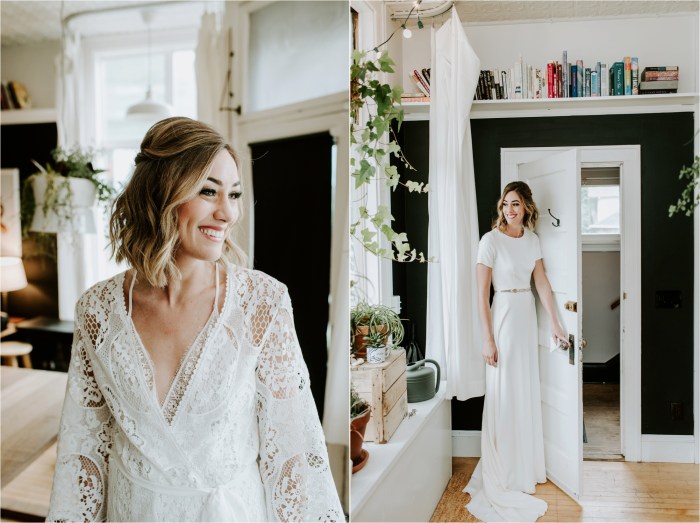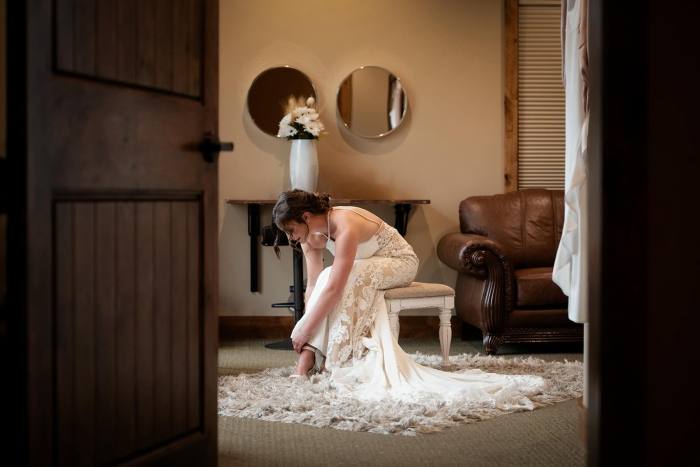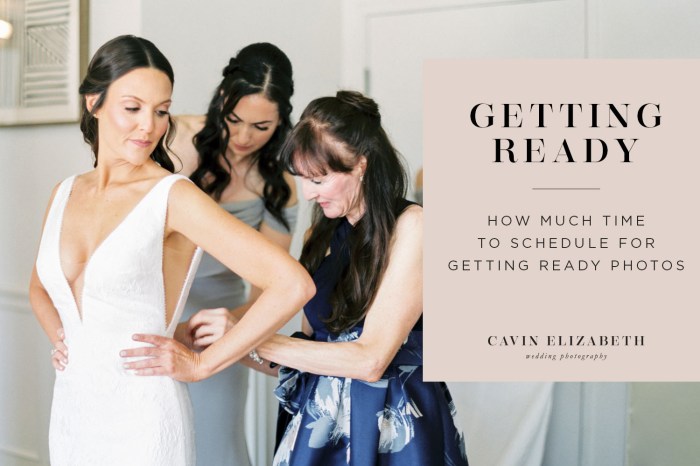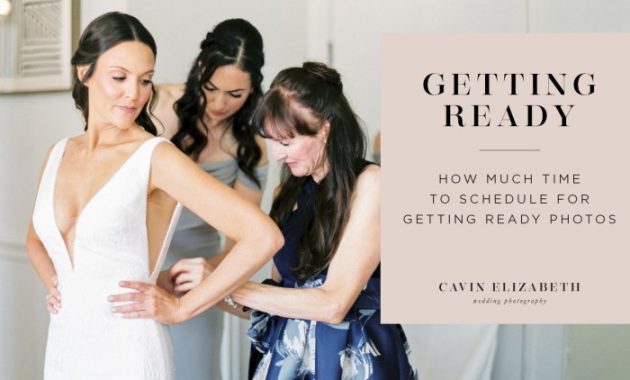Wedding Guest Attire Etiquette
Dressing for a wedding – Navigating wedding attire can feel overwhelming, but understanding the nuances of formality, location, and the couple’s wishes ensures you’ll look and feel your best while respecting the occasion. This section covers essential etiquette guidelines to help you choose an appropriate outfit.
Appropriate Attire for Various Wedding Formality Levels
The level of formality dictates the appropriateness of your attire. Consider the wedding invitation’s wording or any provided dress code as your primary guide. Below is a table summarizing attire suggestions for different formality levels.
| Formality Level | Appropriate Attire for Women | Appropriate Attire for Men | Things to Avoid |
|---|---|---|---|
| Formal (Black Tie, White Tie) | Floor-length gown, elegant jewelry | Tuxedo, tails | Casual dresses, jeans, bright colors |
| Semi-Formal (Cocktail) | Cocktail dress, dressy pantsuit, elegant skirt and top | Suit, dress shirt, tie | Jeans, t-shirts, sneakers |
| Casual | Sundress, skirt and blouse, stylish jumpsuit | Dress pants, button-down shirt, blazer (optional) | Ripped jeans, overly casual attire |
Wedding Location and Attire
The wedding’s location significantly influences appropriate attire. A beach wedding calls for lighter fabrics and more casual styles than a church wedding, which generally demands more formal attire.
- Beach Weddings: Light fabrics like linen and cotton, sundresses, comfortable shoes.
- Garden Weddings: Flowing dresses, elegant separates, comfortable shoes suitable for grass.
- Church Weddings: More formal attire, such as cocktail dresses or suits.
Adhering to the Couple’s Dress Code, Dressing for a wedding

Source: squarespace-cdn.com
Always prioritize the couple’s specified dress code. If they request a particular style or color scheme, adhere to their wishes. Respecting their vision ensures you contribute to a harmonious and memorable event.
Wedding Attire Faux Pas
Certain fashion choices should be avoided at weddings. These can detract from the event’s elegance and show disrespect to the couple.
- Wearing white (unless specifically requested by the couple)
- Wearing overly revealing clothing
- Wearing jeans or other overly casual attire (unless specified as appropriate)
- Wearing distractingly loud or bright colors
Finding the Perfect Outfit
Selecting the perfect wedding guest outfit involves careful consideration of several factors. This section provides a step-by-step guide to help you find an outfit that reflects your personal style while being appropriate for the occasion.
A Step-by-Step Guide to Outfit Selection
- Determine the Wedding Formality: Check the invitation or contact the couple for clarification.
- Consider Your Personal Style: Choose an outfit that makes you feel confident and comfortable.
- Assess Your Body Type: Select styles that flatter your figure (discussed further below).
- Check the Wedding Theme (if any): Ensure your outfit aligns with the overall aesthetic.
- Shop Around: Explore different stores and websites to find the perfect piece.
- Try it On: Ensure a proper fit and comfortable movement.
Choosing Complementary Accessories
Accessories play a vital role in completing your wedding guest look. The right shoes, jewelry, and handbag can elevate your outfit and create a polished appearance.
- Shoes: Choose comfortable yet stylish footwear appropriate for the location and formality.
- Jewelry: Select pieces that complement your outfit without overpowering it.
- Handbags: Opt for a clutch or small bag that complements your attire.
Outfit Styles for Various Body Shapes
Different outfit styles flatter various body shapes. Consider these suggestions when choosing your attire.
Choosing the right outfit for a wedding can be a fun yet challenging process. Finding the perfect dress is key, and if you’re looking for options, you might want to check out best online website for wedding dresses for a wide selection. Once you’ve secured your dress, remember to consider the overall look, including shoes and accessories, to complete your wedding guest ensemble.
- Pear Shape: A-line dresses, empire waistlines, and dresses with details on the top.
- Hourglass Shape: Fitted dresses, wrap dresses, belted styles.
- Rectangle Shape: Belted dresses, peplum tops, dresses with ruffles or details to create curves.
Wedding Outfit Checklist
Before making a purchase or renting an outfit, use this checklist to ensure you’ve considered all important factors.
- Appropriate formality level
- Comfort and fit
- Complementary accessories
- Suitability for the wedding location
- Alignment with the wedding theme (if any)
- Budget
Accessorizing for Success: Dressing For A Wedding

Source: cathedralpineslodge.com
Accessories can transform a simple outfit into a sophisticated ensemble. Careful selection of jewelry, hairstyle, and footwear will enhance your overall look and make you feel confident and stylish.
Jewelry Selection
Jewelry choices should complement your outfit and the wedding’s theme. Avoid overly flashy or distracting pieces.
- Formal Weddings: Elegant earrings, a delicate necklace, a bracelet.
- Semi-Formal Weddings: Statement earrings, a simple necklace, a bracelet or ring.
- Casual Weddings: Minimalist jewelry or a single statement piece.
Versatile Accessories
Some accessories are versatile enough for both the ceremony and reception. Investing in these pieces ensures you’re prepared for the entire event.
- A stylish clutch
- Elegant jewelry that can be dressed up or down
- Comfortable yet elegant heels or flats
Appropriate Hairstyles
Your hairstyle should complement your outfit and the wedding’s formality. Consider the weather and your hair type when making your choice.
- Formal Weddings: Updos, elegant braids, or styled curls.
- Semi-Formal Weddings: Half-updos, loose waves, or a sleek ponytail.
- Casual Weddings: A simple braid, loose waves, or a natural style.
Comfortable Footwear
Choose comfortable shoes that you can wear for several hours. While style is important, comfort is key to enjoying the wedding festivities.
- Wedges or block heels provide stability and comfort.
- Flats are a good option for casual weddings or if you anticipate a lot of walking.
- Avoid brand new shoes to prevent blisters.
Color and Style Considerations
Color and fabric choices significantly impact the overall impression of your wedding guest attire. This section discusses appropriate color palettes, fabric choices, and seasonal considerations.
Appropriate and Inappropriate Colors
While there are no strict rules, it’s generally advisable to avoid wearing white (unless specifically requested by the couple) and extremely bright or loud colors that might draw attention away from the bride.
- Appropriate Colors: Pastels, jewel tones, muted shades.
- Inappropriate Colors: Bright white, overly bright neon colors.
Seasonal Outfit Combinations
The season influences fabric choices and color palettes. Consider the weather when choosing your outfit.
- Spring: Pastel colors, floral prints, lightweight fabrics.
- Summer: Bright colors, linen, cotton, breezy fabrics.
- Fall: Earthy tones, velvet, corduroy, heavier fabrics.
- Winter: Darker colors, rich fabrics like velvet or brocade.
Wedding Aesthetic
Consider the overall wedding aesthetic when choosing your outfit. A rustic wedding might call for a more relaxed style than a formal black-tie affair.
Fabric Choices
Fabric selection influences comfort and appropriateness. Consider the weather and the formality of the event.
- Linen and cotton: Suitable for warmer weather and casual events.
- Silk and velvet: Appropriate for formal events and cooler weather.
- Lace and chiffon: Can be used for both formal and semi-formal events.
Illustrative Examples of Wedding Guest Outfits

Source: cavinelizabeth.com
This section provides detailed descriptions of wedding guest outfits for various levels of formality and body types, along with visual descriptions illustrating color palette impact and outfit coordination with wedding themes.
Examples Based on Formality
Here are three outfit examples demonstrating attire suitable for different formality levels:
- Formal: A floor-length navy blue gown with delicate silver jewelry, a silver clutch, and elegant heels.
- Semi-Formal: A coral-colored midi dress with a defined waist, nude heels, gold statement earrings, and a small gold clutch.
- Casual: A floral sundress paired with sandals, a straw hat, and a crossbody bag.
Examples Based on Body Type
Outfit examples considering different body shapes:
- Pear Shape: A-line dress with a fitted bodice, drawing attention to the upper body. Paired with wedges and a statement necklace.
- Hourglass Shape: A wrap dress that accentuates the waist, complemented by heels and simple earrings.
- Rectangle Shape: A dress with ruffles or a peplum top to create curves, paired with heels and a bold necklace.
Color Palette Impact
Different color palettes create varying visual effects:
- Monochromatic: Using varying shades of a single color creates a sophisticated and elegant look.
- Complementary: Combining colors opposite each other on the color wheel creates a vibrant and eye-catching effect.
- Analogous: Using colors adjacent to each other on the color wheel creates a harmonious and balanced look.
Outfit Complementing a Rustic Wedding Theme
Imagine a flowing maxi dress in a muted floral print, paired with brown leather sandals, a straw hat, and delicate gold jewelry. This creates a relaxed yet stylish look appropriate for a rustic wedding setting.
Questions Often Asked
What if the invitation doesn’t specify a dress code?
If unsure, contact the wedding party or a close friend of the couple to inquire about the appropriate attire. Err on the side of slightly more formal than less formal.
Can I wear white to a wedding?
Generally, it’s best to avoid wearing white to a wedding as it can be seen as competing with the bride. Off-white or ivory shades are usually acceptable.
What should I do if I’m unsure about the formality level?
When in doubt, a semi-formal outfit is a safe bet. It allows for some flexibility while remaining respectful of the occasion.
How far in advance should I start looking for an outfit?
It’s advisable to begin your search at least a few months before the wedding to allow ample time for alterations, shipping, or rentals.
What if my outfit gets damaged before the wedding?
Have a backup outfit ready, or contact a tailor for quick repairs if possible.

